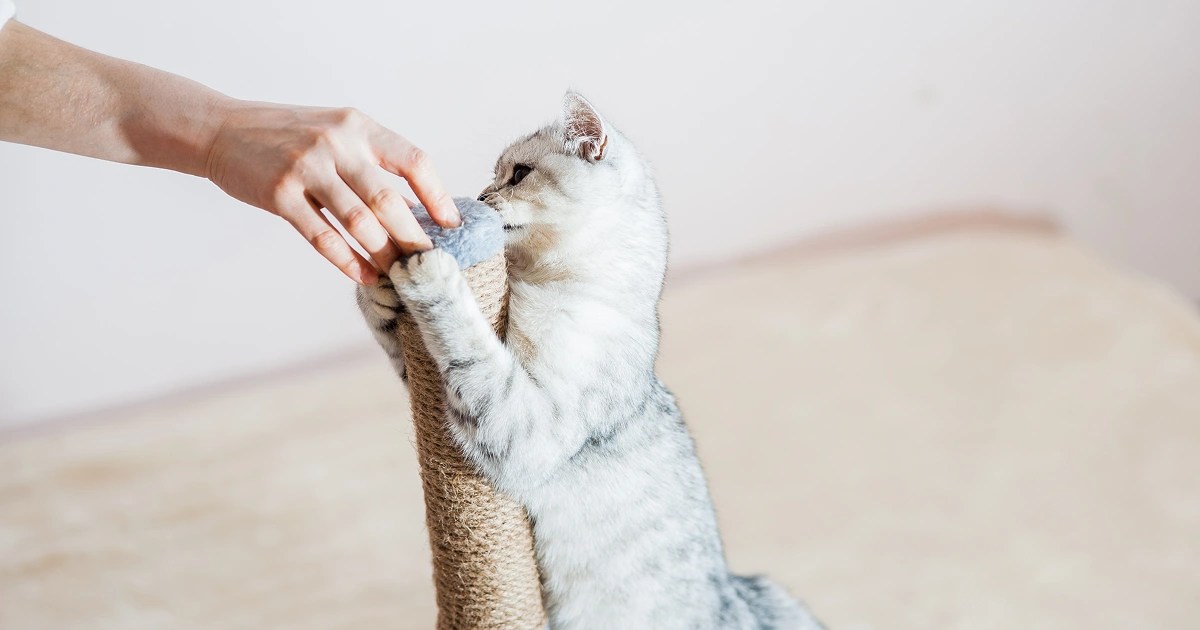
Claws are a natural part of your cat’s body, and they are used for hunting, self-defense, climbing, and other activities out in the wild. But if you have an indoor cat, it can be frustrating dealing with sharp nails, especially if they are used to tear up your furniture. However, there are ways to reduce unwanted scratching behavior without resorting to declawing your cat.
In fact, in many countries, as well as several Canadian provinces and U.S. states, declawing is illegal. The process involves physically removing the last bone in the cat’s toes, which can be painful and medically unnecessary. Declawing can lead to chronic pain and changes in behavior such as increased biting instead.
Tips for Dealing with Scratching
Scratching is normal behavior for cats. They do it to stretch their muscles and joints (think about how good it feels to stretch and wiggle your fingers and toes), to mark their territory, and also to simply maintain their nails. Here are a few ways to promote healthy scratching.
Provide multiple scratching surfaces. There are tons of different types of scratching posts you can buy that range from vertical poles to horizontal boards and everything in between. You can even find ones covered with different materials including sisal, rope, carpet, and cardboard. Place scratching posts in areas where your cat spends a lot of time, or where they have a habit of scratching your furniture or flooring instead. Keep them stationary so your cat always knows where to find them.
Redirect their attention. If your cat is making a beeline for the leg of the sofa or your arm, calmly steer them to a cat tree or scratching post instead. Once they start sharpening their nails there, quickly reward them with positive praise and head scratches or a small treat. Make these areas more desirable by sprinkling some catnip around or adding some fun toys.
Add furniture protectors. While your cat is learning where not to scratch, cover these surfaces with durable fabric or double-sided tape to protect them and deter your cat. Not only will it help prevent their claws from causing damage, but they do not like how sticky surfaces feel on their paws.
Engage in active play with your cat. Let your cat burn off some energy and use their claws on their toys instead. Try a string with feathers attached that they could bat, catnip-filled objects, or even balls of tinfoil they can swat around.
Trim their claws. Just like you trim your dog’s nails, you should trim your cat’s nails periodically as well. This can take the edge off while leaving the claw intact, so they still get the same sensation without causing as much destruction. You can also get soft plastic nail caps that slip over your cat’s claws and allow them to scratch without hurting anything.
Be respectful of your cat. Learn their body language and when they are telling you to stay away. Don’t bother them while they are eating, drinking, or using the litter box. Approach them calmly, quietly, and gently, as a flurry of activity and noise can make your cat feel threatened and anxious, which can lead to more clawing and scratching.
It is possible to live in peace and harmony with a cat that is not declawed. Treat your cat with kindness, and don’t forget to board them at Lake Wylie Pet Resort in our luxurious cattery if you are heading out of town! Contact us today to book your cat’s stay.


